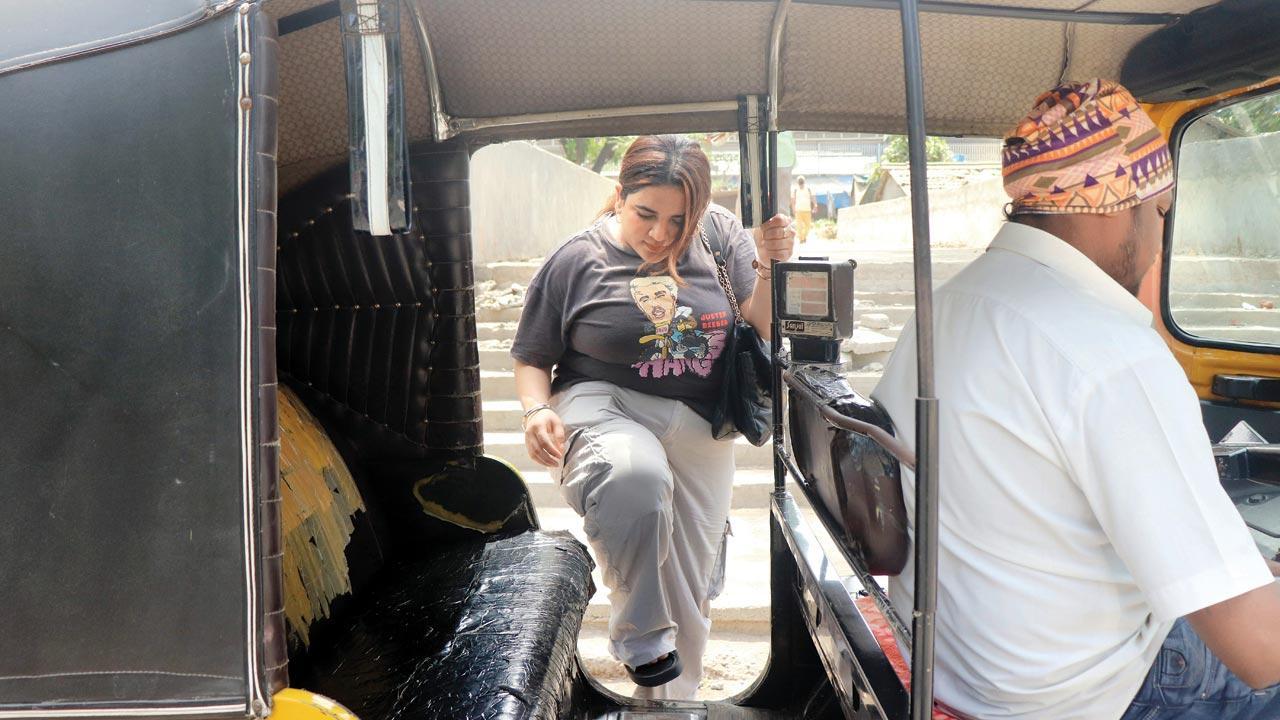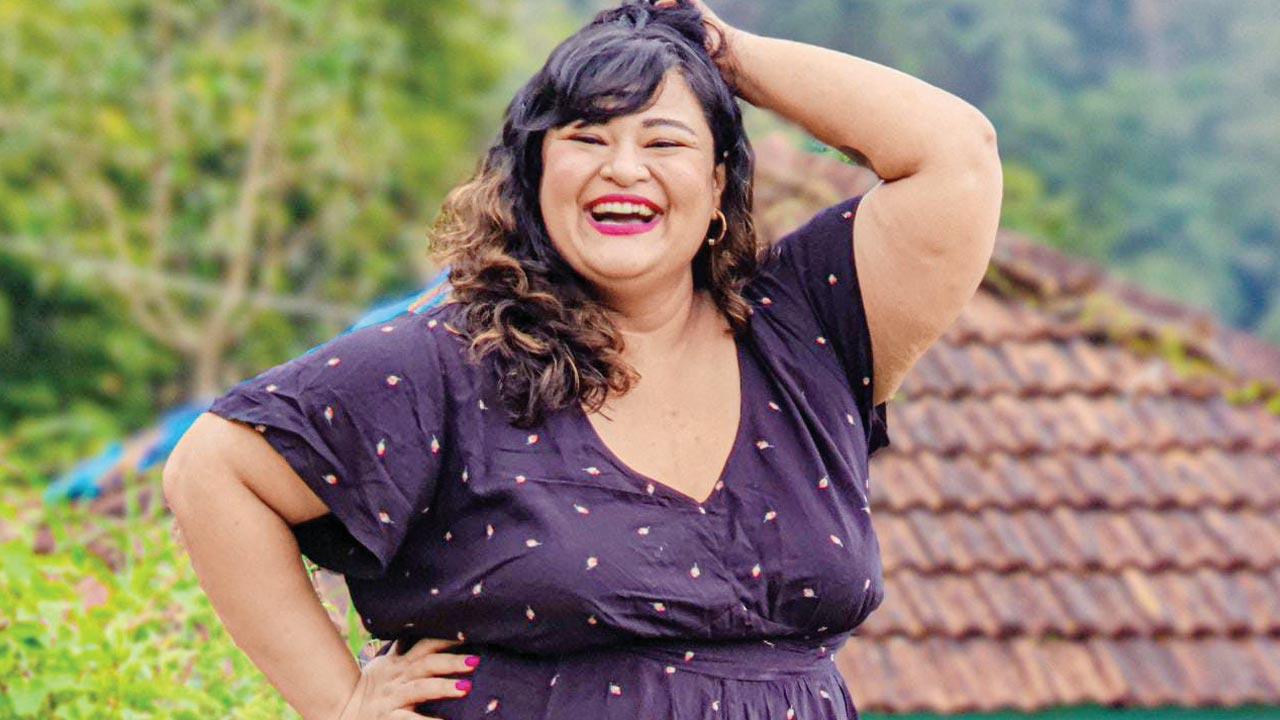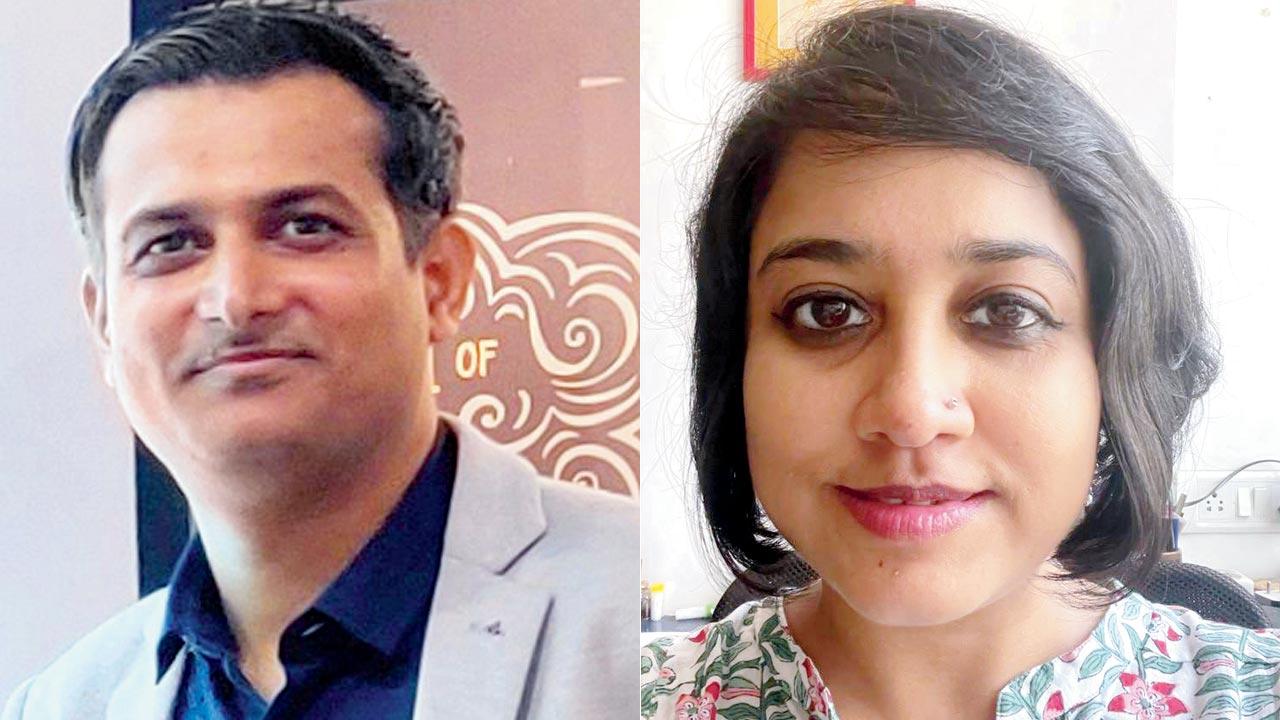Plus-size travellers who struggle with seating on buses and flights say it’s time that policy makers design transport infra that’s inclusive, and doesn’t make them look like social misfits

Plus-size influencer Prableen Kaur says its awkward for her to ask someone to make space when travelling. Pic/Anurag Ahire
Mumbai resident Anindita Roy is a traveller by heart. The digital creator and plus-size model, whose Instagram is all about body positivity and flaunting your curves, loves planning a vacation once every quarter. If there’s something she doesn’t enjoy, it’s the discomfort of air travel. It can be a dampener, she admits. “The seats in the economy class are relatively affordable, but they are really small and so are the belts. I remember once on a flight from Mumbai to Kolkata, when I asked for a seatbelt extension, a fellow passenger looked at me as if I was committing a crime,” says the 36-year-old, adding, “I am not ashamed to ask for an extension, but many who are my size or even bigger, find it embarrassing to ask for one because they fear being judged.” She feels that the first change that airlines could make, is to increase the length of their seat belts.
Plus-size influencer Prableen Kaur has experienced similar discomfort while travelling. “Our big hips are not meant for airplane seats, even the leg room is less accommodating and it is awkward to ask someone else to make space for you, just so that you can sit comfortably,” she says.
 Anindita Roy, who now prefers taking the cab to work, struggled with public transport in her home city Kolkata. “Back in 2013, I’d take the Metro during my daily commute. People would throw accusatory looks at me when I sat on the eight-seater, as it meant that it would accommodate one person less,” she says.
Anindita Roy, who now prefers taking the cab to work, struggled with public transport in her home city Kolkata. “Back in 2013, I’d take the Metro during my daily commute. People would throw accusatory looks at me when I sat on the eight-seater, as it meant that it would accommodate one person less,” she says.
Last week, a video featuring UK-based blogger and plus-size traveller, Kristy Leanne, 29, went viral on the social networking site TikTok. In the video, Leanne recounted her ordeal while travelling from London to Germany on Irish ultra low-cost carrier Ryanair. The video, which has garnered over 1.3 million views, details how airlines are not designed keeping in mind the needs of plus-size passengers, be it the long compact aisle, compromised leg space, tiny bathrooms or seatbelts. While her video garnered a lot of attention, she also received brick-bats with one insensitive user commenting, “Do we really live in a society where people expect the world to change around them, instead of them bending to the world around them?”
Kaur and Roy say that freedom of movement and mobility is a universal right, and it’s time policies are made inclusive. Roy, who now prefers travelling by cab to work, remembers how she struggled with public transport in her home city Kolkata. “Back in 2013, I’d take the Metro during my daily commute. People would throw accusatory looks at me when I sat on the eight-seater, as it meant that it would accommodate one person less. It can really affect your morale,” she says.
 Paresh Rawal and Rupali Gupte
Paresh Rawal and Rupali Gupte
As per existing travel policies in India, plus-size passengers have to shell out extra if they want to travel comfortably. “If there is an obese or a plus-size passenger on board, they are asked at the counter itself to book for a second seat if needed, for which they have to pay the full price. If there are no extra seats available, we ask them to travel on the next flight,” says Jignesh Mhatre, a cabin crew member for Spicejet, adding, “This practise is not limited to Spicejet, all airlines in India have to follow this protocol listed by the DGCA [Directorate General of Civil Aviation].” While most public transport buses, like the BEST, don’t have wider seats available, Cityflo, a premium daily commute service for urban India, currently operating in Mumbai and Delhi NCR, offers expandable aisle seats. But a senior marketing officer at Cityflo said that these seats were only for people to sit comfortably.
According to transportation expert Paresh Rawal, India’s transportation infra is far from inclusive. “It is built keeping the average-sized Indian [in mind] and [with the intention of] maximising resources. Policy makers need to make a choice between the number of people they can transport and the needs of its travellers.” A starting point would be to create wider seats with enough leg room, which are designated just for plus-size people.
Rupali Gupte, architect and the founder of School of Environment and Architecture, says all public spaces should be built keeping in mind diverse body types. “Modernity has shaped the discourse of architectural space through standards. These standards are often focused on ideal body types. [Swiss-born French architect] Le Corbusier [1887–1965] devised the Modular as an anthropometric scale of proportions as a bridge between the metric and imperial systems,” she says. Modulor considered the standard human height as 1.75 metres, excluding feminine measures. The dimensions were refined with overall height of raised arm set at 2.26 metres. “All other body types were ignored.”
According to Gupte, architecture and city form in South Asia is not based on standards, but on “types” that have evolved from years of consolidation through practices of life and living. “Most of the spaces did not have specialised functions but provided series of affordances for people to use as per their own comfort levels. It is the process of standardisation that has made certain body types appear as misfits. Whether it is the design of cities or the design of architectural spaces, if one thinks closely about patterns of life and living through social spaces, one would design these spaces for a polyphony of conditions and create multiple affordances for various body types to inhabit.”
How to make plus-size travel easy
Look up different airline websites for information on seat size and leg room space
Don’t feel ashamed to ask for seatbelt extensions
Book an aisle seat as it is more comfortable and has an adjustable armrest
Learn to ignore any kind of anxiety-inducing behaviour from fellow travellers
 Subscribe today by clicking the link and stay updated with the latest news!" Click here!
Subscribe today by clicking the link and stay updated with the latest news!" Click here!










